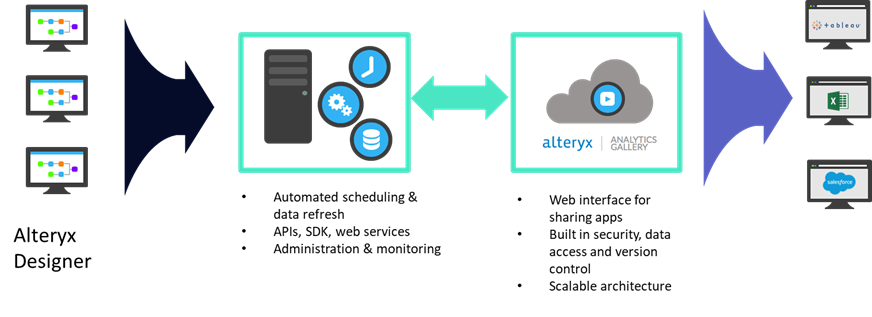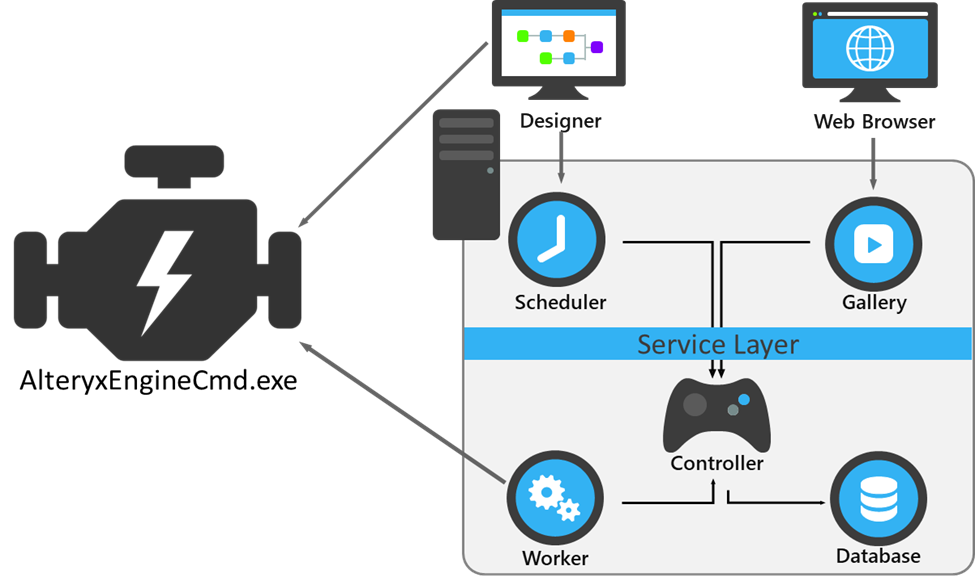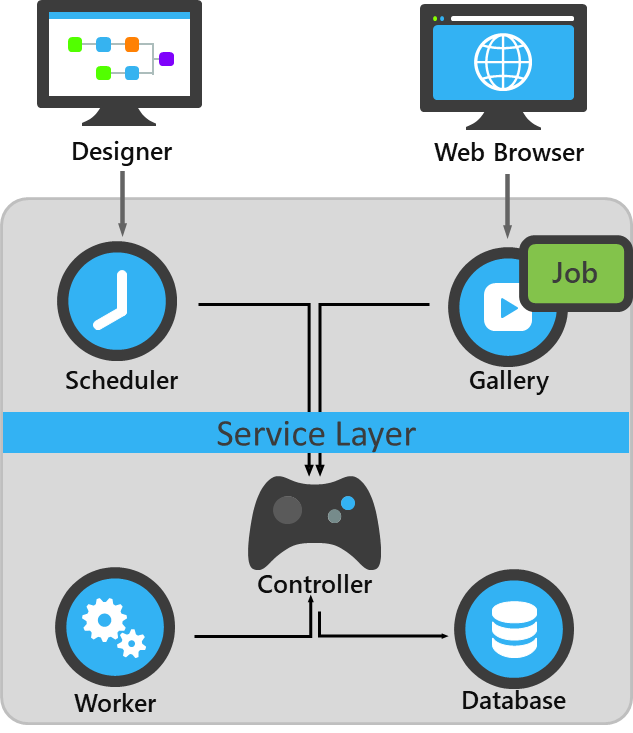Welcome to the world of Alteryx Server! In today’s fast-paced business environment, organizations generate and consume a massive amount of data. To efficiently manage this data and gain valuable insights, businesses require a robust data management and analytics platform. Alteryx Server is a powerful data analytics and collaboration platform that enables organizations to share, collaborate, and scale analytics across teams, departments, and locations. In this blog, we’ll explore the features and capabilities of Alteryx Server, and how it can help organizations improve their data management and analytics processes. Whether you are a data analyst, data scientist, or business leader, this blog will provide you with the insights and information you need to make the most of Alteryx Server. So, let’s dive in and discover the power of Alteryx Server!

When do you need Alteryx Server?
Alteryx Server is a powerful tool that provides organizations with the ability to manage, collaborate and deploy data workflows created using the Alteryx Designer. Alteryx Server can be useful in several scenarios, including:
- Collaborative Analytics: When you have a team of data analysts and data scientists working on a project, Alteryx Server can help streamline collaboration by allowing team members to share workflows and collaborate on projects.
- Data Governance: Alteryx Server enables organizations to manage and govern data workflows, ensuring that sensitive data is kept secure and compliant with regulatory requirements.
- Scalability: As the size and complexity of your data workflows grow, Alteryx Server can provide scalability and improve performance by distributing workloads across multiple machines.
- Automation: Alteryx Server can automate the execution of workflows on a schedule, enabling organizations to build automated data pipelines and reduce manual intervention.
- Deployment: Alteryx Server can be used to deploy workflows to different environments such as production or test, ensuring that the same workflow is used across different stages of the data pipeline.
Alteryx Server Architecture
This is the perfect time to discuss the Alteryx Server Architecture. The diagram below may look like a very complex one, but I will describe each component and why each is important.

The main thing I want you to understand is the AlteryxEngineCmd.exe is the heart of Alteryx. It runs the workflows. Additionally, it opens and processes Alteryx files. Looking at the diagram, it appears in both Designer and Server.
Next, let us talk about the Service Layer, which is really the foundation of the server architecture. It orchestrates the workflow processing and manages the job queue. This layer contains the controller, worker(s), and database.
It’s no mistake that the Controller is the dead center of this architecture. Specifically, it manages the Worker job queue, delegates work to the Worker, and supports Gallery/Server UI with the application interface and results rendering.
The Worker is responsible for executing workflows. It manages the Alteryx Engine and is responsible for the workflow output.
The Database is an embedded, user-managed MongoDB. It serves as a persistence layer for the workflows, application files, scheduled jobs, and results/gallery data.
Another component that is not really part of the architecture is the Scheduler. There is a scheduling UI in Designer and scheduling functionality in the Service Layer. This enables jobs to be sent from Designer to Server. Additionally, jobs are added to the Worker job queue at their scheduled time.
The Complete Job Workflow Process
I am going to detail how a job is requested to its results being displayed in the Server UI. Here are the steps:
- The job is pushed to the controller.
- The controller queues the job for execution.
- The job executes.
- The Server UI asks the controller if the job is done.
- The controller checks.
- Once completed, the controller passes the results to the Server UI

Conclusion
In conclusion, Alteryx Server is a comprehensive platform for data analytics that includes several components working together to provide a complete solution for data workflows. Each component plays a critical role in the platform, from managing job scheduling and security to providing users with access to their workflows and data assets. Understanding the different parts of Alteryx Server is essential for building and maintaining efficient data workflows and driving better business decisions.


